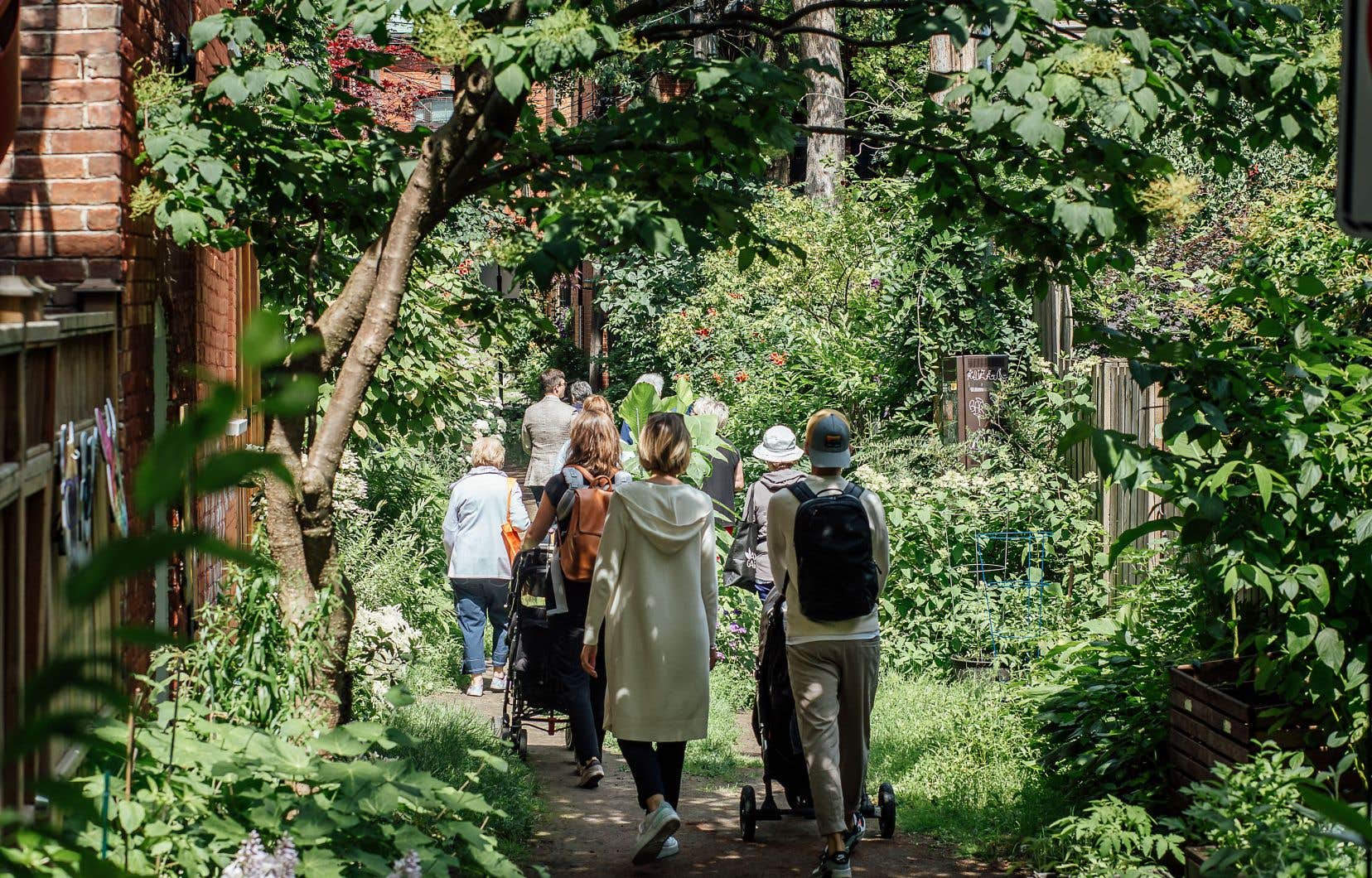Trees provide many benefits, often unsuspected, to city dwellers. During a stroll in Parc Basile-Routhier, located between Boulevard Gouin and the Rivière des Prairies, two specialists in the urban forest made us discover the services rendered to us by these living beings larger than us.
One of the main benefits of trees in the city is the cooling they generate, says Sarah Tardif, doctoral student in forest ecology at UQAM, during a walk in this wooded park.
The shade cast by trees reduces heat islands. But in addition to the shade they make, the trees produce coolness. “When they photosynthesize, trees evaporate water at the same time as they absorb CO2, and around them is created a small cloud of water that we cannot see, but which refreshes. Mature trees near a house can limit air conditioning costs. Between a park with a few mature trees and an area without trees, a temperature difference of 1°C to 8°C can be noted. And the difference can be up to 15°C between an industrial park and an urban forest,” she explains.
Air pollution is not a big problem for trees, because they capture CO2 and release oxygen, which cleans the air, she continues. “They also purify the air by absorbing fine particles of pollution, all those that are less than 10 micrometers, in particular [celles provenant des] car exhaust,” she says.
Wooded parks and forests also have benefits for our psychological and physiological health. Seeing green would stimulate certain parts of our brain that generate pleasure and happiness, it seems. Just being surrounded by green spaces is soothing.
“Wooded places invite us more to go for a walk, to run, to stroll than concrete spaces. So they encourage us to do physical activity, and we know that it reduces cardiovascular disease,” she points out before citing an American study which showed that between 2002 and 2012, 100 million ash trees died because of the borer, an Asian insect that wreaked havoc in Montreal, and that the disappearance of all these trees resulted in a sharp increase in mortality from cardiovascular disease in the cities affected by this hemorrhage. falls.
Trees can also contribute to noise reduction. A tree barrier 30 meters thick can reduce noise by 8 decibels. However, we know that a reduction of 10 decibels corresponds to a noise reduction of 50%. “And also, looking at trees gives us the psychological impression that there is less noise,” she says.
Also, trees protect us from the wind, especially in winter. “It would therefore be interesting to plant more trees that retain their foliage in winter, such as conifers, which are rather rare in the city,” says the doctoral student, who continues her research within the group of the Research Chair on the urban forest of UQAM.
Marine Fernandez, postdoctoral fellow at UQAM, who also works for the Urban Forest Research Chair, cites a study that showed that children who grew up in more rural areas had better health because they had better gut microbiota. “The diversity of bacteria present in their stools was richer than that of children who lived in more urbanized environments,” she says.
“The more an environment is rich in trees, in vegetation, the more it is diversified, the more micro-organisms there will be, and the more it has a positive effect on the health of trees and humans,” she says.
Water retention
Trees in the city make it possible to absorb and retain water in the soils which, in the city, are very dense. “When water hits compacted soil, it can’t even penetrate it. The fact that there are trees will make it possible to absorb this water and retain it,” explains Ms.me Fernandez.
And then, on the banks of the river, the trees make it possible to limit erosion by keeping the soil in place. “They thus preserve the banks and also prevent the soil from ending up at the bottom of the river, where it will sediment and pollute the river water,” she points out.
The presence of trees along the rivers also helps to cool the water, which benefits fish and ducks.
To maintain these benefits, it is of course necessary to plant more trees, but also to plant various species to avoid carnage, such as that of the ash trees which are the prey of the borer, recall the two specialists in forest ecology.
Planting more trees will increase the canopy, which is associated with the crown of trees, but which in forestry is defined as the surface on the ground that a tree will cover, or, in a way, “the surface of its shadow when the sun is at its zenith”, specifies Sarah Tardif.
“In 2015, we had 20% canopy cover in Montreal, which means that 20% of the area of Montreal was covered by trees. We then decided to implement the Canopy Action Plan, which aimed to reach 25% canopy coverage by 2025. In 2017, we reached 22%, and in 2021, we fell back to 21%, probably due to damage caused by the emerald ash borer, among other things. But, in September 2022, we reached 25%! Now, the goal is to reach 26% by 2025, which amounts to planting three times the area of Mount Royal Park,” she says.
“Currently, in Montreal, the forests are not the most diversified, because 76% of public trees are represented by only five genera,” she adds. Maples represent 37% of public trees, followed by ash (12%), honey locust (11%) and elm (8%).
In the middle of Basile-Routhier Park is an arboretum where you can see different species of trees, several of which are exotic, such as ginkgo biloba, Korean fir, Sterling silver linden, Amur Maackia, Amur phellondendron, New Horizon elm, which are very well adapted to the urban environment. The City of Montreal has begun to plant such species in addition to native species, which are resistant to our climate and city life.
